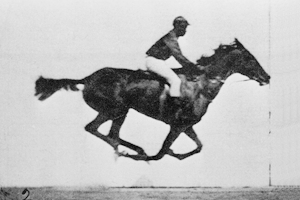Squash And Stretch on:
[Wikipedia]
[Google]
[Amazon]
 Squash and stretch is the phrase used to describe "by far the most important" of the 12 basic principles of animation, described in the book '' The Illusion of Life'' by Frank Thomas and
Squash and stretch is the phrase used to describe "by far the most important" of the 12 basic principles of animation, described in the book '' The Illusion of Life'' by Frank Thomas and
 The principle is based on observation that only stiff objects remain inert during motion, while objects that are not stiff, although retaining overall volume, tend to change shape in an extent that depends on
The principle is based on observation that only stiff objects remain inert during motion, while objects that are not stiff, although retaining overall volume, tend to change shape in an extent that depends on
Ollie Johnston
Oliver Martin Johnston Jr. (October 31, 1912 – April 14, 2008) was an American motion picture animator. He was one of Disney's Nine Old Men, and the last surviving at the time of his death from natural causes. He was recognized by The Wal ...
.
Basis
 The principle is based on observation that only stiff objects remain inert during motion, while objects that are not stiff, although retaining overall volume, tend to change shape in an extent that depends on
The principle is based on observation that only stiff objects remain inert during motion, while objects that are not stiff, although retaining overall volume, tend to change shape in an extent that depends on inertia
Inertia is the natural tendency of objects in motion to stay in motion and objects at rest to stay at rest, unless a force causes the velocity to change. It is one of the fundamental principles in classical physics, and described by Isaac Newto ...
and elasticity of the different parts of the moving object. To illustrate the principle, a half-filled flour sack dropped on the floor, or stretched out by its corners, was shown to be retaining its overall volume as determined by the object's Poisson's ratio
In materials science and solid mechanics, Poisson's ratio (symbol: ( nu)) is a measure of the Poisson effect, the deformation (expansion or contraction) of a material in directions perpendicular to the specific direction of loading. The value ...
.
Examples of the elasticity of the human body in motion were found in photographs the animators found in newspaper sports pages. Using these poses as reference the animators were able to start "observing (the motion) in a new way". Author Walt Stanchfield said: "A simple shape plus squash and stretch are all the anatomy you need for cartoon characters".
Application
The ball that would change shape, compressing ("squash") as it hit the ground, then extending (stretch) as it bounced up again, was the simplest example that was part of the preparatory training for Disney animators. During the 1930s, the squash and stretch were exaggerated by Disney animators, making it ever more extreme, but they had to maintain the overall volume of an object so that it did not appear to change volume as well as shape.See also
* 12 basic principles of animation * Anticipation (animation) * Follow through and overlapping actionReferences
Animation techniques Animation terminology {{animation-stub